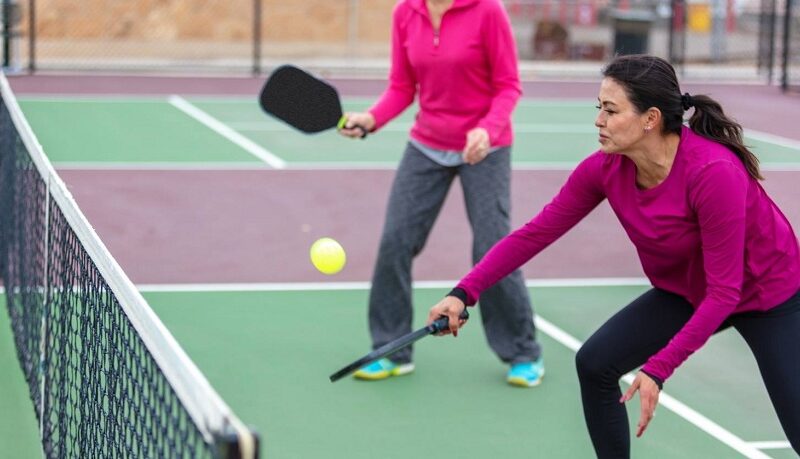Pickleball is a sport known for its unique blend of elements from tennis, badminton, and table tennis. One of the key strategies in this fast-paced game is the dink shot. A dink is a soft and controlled shot hit just over the net, which can be a game-changer when executed effectively. In this comprehensive guide, we will delve into the rules and techniques of dinking in pickleball, helping you master this delicate art.
The Significance of Dinking
Dinking is a crucial aspect of pickleball for several reasons. It not only allows players to slow down the game and regain control but also creates opportunities to outmaneuver opponents. Here’s why dinking is so important:
Control: Dinking is all about precision and control. By gently tapping the ball over the net, you reduce the risk of making errors, keeping the ball in play.
Placement: Dinking lets you place the ball strategically, aiming for the sidelines or at your opponents’ feet, making it harder for them to return the shot effectively.
Forcing Errors: When executed skillfully, dinking can force your opponents into making mistakes. They might hit the ball too high or too wide, leading to an easy point for your team.
Transitioning to Offense: Dinking is often used as a transition shot to set up a more offensive play. After a series of dinks, you can capitalize on an opening and attack the net with a powerful shot.
Read More: How can you very efficiently win fantasy cricket matches?
Dinking Rules
Dinking is a legal and widely used strategy in pickleball, but it comes with specific rules to ensure fair play. Here are the key rules you need to keep in mind:
No Volley Zone (Kitchen) Rule: The no volley zone, often referred to as “the kitchen,” extends 7 feet from the net on both sides. When dinking, you must ensure that both of your feet are behind this zone. You cannot volley (hit the ball in the air without it bouncing) when standing in the kitchen.
Double Bounce Rule: To initiate dinking, the serve and return must bounce once on each side of the net before players can start volleying the ball. After the double bounce, you can engage in dinking or other types of shots.
Non-Volley Zone Violation: If any part of your body touches the kitchen (non-volley zone) while hitting a dink, it is considered a fault, and the point goes to your opponents.
Height Restrictions: Dink shots should be hit softly, clearing the net with a low trajectory. Striking the ball too high can lead to a fault. The maximum allowable height can vary but typically falls around 7 to 8 feet above the net.
Foot Faults: Be cautious of foot faults. Ensure both your feet are behind the non-volley zone (kitchen) line during your dink shots.
In-and-Out Rule: If the ball lands in the non-volley zone, it’s considered out, and the point goes to your opponents. If it lands out of bounds, the point is also awarded to your opponents.
Faults and Scoring: Hitting the ball into the net or out of bounds results in a fault. The opposing team is awarded a point. In pickleball, you don’t have to be serving to score a point. Faults can happen during dinking exchanges.
Techniques for Effective Dinking
Mastering the art of dinking requires practice and finesse. Here are some techniques to help you become a skilled dinker:
Grip: Hold the paddle with a light grip, allowing for better control and touch. A continental grip, similar to a shakehand grip in tennis, is often used for dinking.
Soft Touch: Focus on a soft touch. The goal is to clear the net by the slightest margin, so the ball gently drops on the other side.
Angle of Paddle: Angle your paddle face slightly downward, ensuring that the ball goes over the net with a gentle arc.
Placement: Aim to place the ball close to the net, making it challenging for your opponents to attack. You can target the sidelines or try to land the ball at your opponent’s feet.
Controlled Wrist Movement: Use your wrist for precise control. Minimize large swinging motions, as they can lead to errors.
Consistency: Develop consistency in your dinking. Practice to make sure your shots land where you intend them to.
Reading Your Opponents: Pay attention to your opponents’ positions and tendencies. Adjust your dinking strategy accordingly to exploit their weaknesses.
Be Patient: Dinking can be a waiting game. Stay patient and look for opportunities to transition to an offensive play when the time is right.
Conclusion
Dinking in pickleball is not only a valuable defensive strategy but also a means of maintaining control and forcing errors. Understanding the rules and practicing the techniques of dinking is essential for players at all skill levels. By mastering the delicate art of dinking, you can become a formidable pickleball player, capable of outmaneuvering your opponents and winning crucial points with finesse. So, get out on the court, practice your dinks, and enjoy the exciting world of pickleball.

